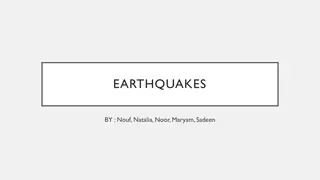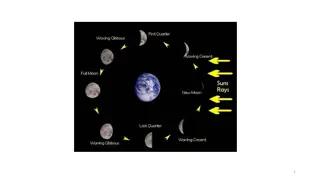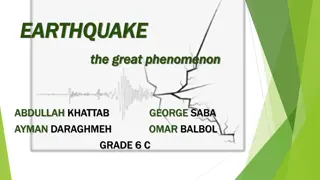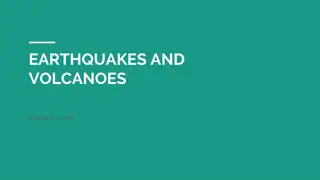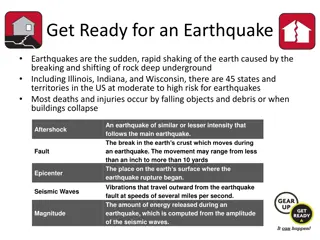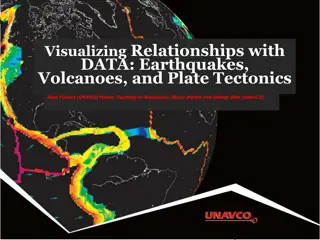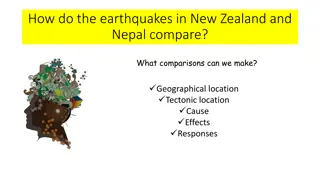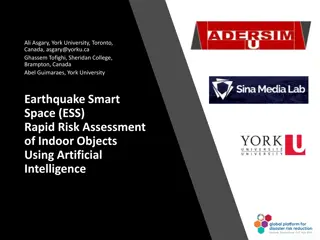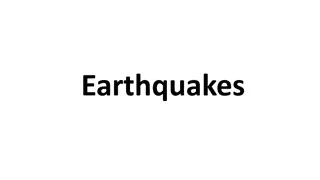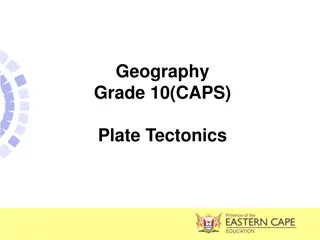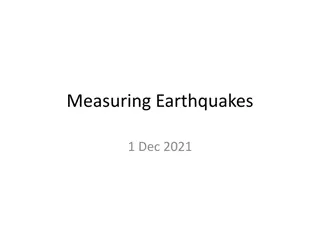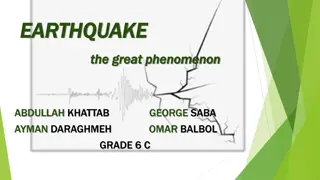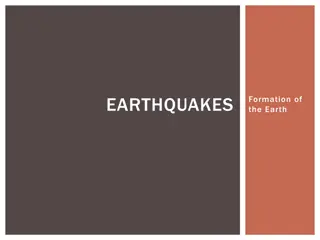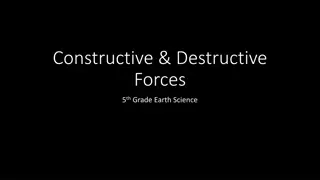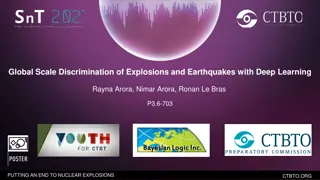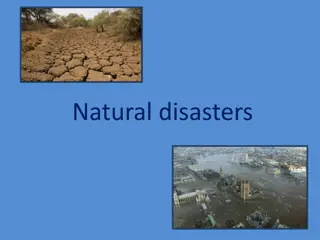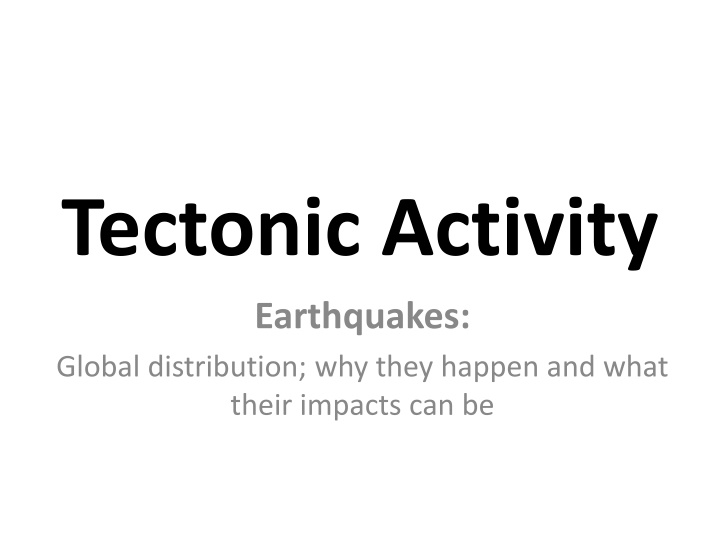
Understanding Earthquakes: Causes, Impacts, and Monitoring
Discover the global distribution and patterns of earthquakes, learn about the features of earthquakes, understand their causes, and explore how they are monitored and measured. Dive into the Richter Scale and earthquake frequency data to grasp the relationship between earthquake size and occurrence frequency.
Download Presentation

Please find below an Image/Link to download the presentation.
The content on the website is provided AS IS for your information and personal use only. It may not be sold, licensed, or shared on other websites without obtaining consent from the author. If you encounter any issues during the download, it is possible that the publisher has removed the file from their server.
You are allowed to download the files provided on this website for personal or commercial use, subject to the condition that they are used lawfully. All files are the property of their respective owners.
The content on the website is provided AS IS for your information and personal use only. It may not be sold, licensed, or shared on other websites without obtaining consent from the author.
E N D
Presentation Transcript
Tectonic Activity Earthquakes: Global distribution; why they happen and what their impacts can be
What is the global distribution pattern? Locations of earthquakes that have occurred between 1963 and 1998 Image: http://denali.gsfc.nasa.gov/dtam/seismic/ Referring to your map showing plate boundaries, state 3 things you notice about the distribution of earthquakes.
Earthquake features re Seismic waves Focus: point underground where the initial slip occurs often many kilometres deep Epicentre: point on Earth s surface directly above the focus where seismic waves first arrive http://www.calstatela.edu/faculty/acolvil/quakes/focus_epicenter.jpg
What causes earthquakes? Watch the short video clip carefully listen for information about: relative plate movement what happens deep in the crust compared to what happens at the surface what causes the earthquake to eventually happen 1. 2. Draw a series of diagrams to help you explain what causes earthquakes. Why do earthquakes happen mostly at destructive and conservative plate boundaries?
How are earthquakes monitored and measured? The sudden, violent movement at the focus send out seismic waves in all directions. It is these waves that cause the ground to move and so cause damage. The ground movements are measured using seismometers. The recorded movement is then displayed as a trace on paper (or on a screen) called a seismograph
Measuring earthquakes Richter Scale is based on the amount of energy released by the earthquake is a logarithmic scale each whole number increase in magnitude represents about 31 times more energy released
Measuring earthquakes Richter Scale Frequency of occurrence What does this table tell you about the relationship between the size of an earthquake (magnitude) and how often they occur (frequency)? Magnitude Earthquake effects Less than 2.0 Micro earthquakes, not felt. Continual 1,300,000 per year (est.) 2.0 2.9 Generally not felt, but recorded. 3.0 3.9 Often felt, but rarely causes damage. 130,000 per year (est.) Noticeable shaking of indoor items, rattling noises. Significant damage unlikely. Can cause major damage to poorly constructed buildings over small regions. At most slight damage to well-designed buildings. Can be destructive in areas up to about 160 kilometres (99 mi) across in populated areas. Can cause serious damage over larger areas. Can cause serious damage in areas several hundred kilometres across. Devastating in areas several thousand kilometres across. 4.0 4.9 13,000 per year (est.) 5.0 5.9 1,319 per year 6.0 6.9 134 per year 7.0 7.9 15 per year 8.0 8.9 1 per year 9.0 9.9 1 per 10 years (est.)
What are the effects of an earthquake? Read p10 in Complete Geography and then complete the following tasks: 1. What is the difference between primary and secondary effects of an earthquake? Give some examples of each make it clear what type they are! Homework: 1. There are many different reasons (factors) to explain why the impacts of earthquakes vary. i. Produce a list (you should be able to come up with at least 5) ii. Choose two of these factors and for each one, write a paragraph to explain why they can affect the impacts of earthquakes. 2. Why do you think people live in areas that suffer from earthquakes?

